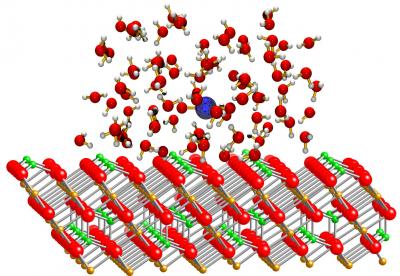Researchers at Pacific Northwest National Laboratory are uniting theory, computation and experiment to discover exactly how heavy elements, such as uranium and technetium, interact in their environment.
As part of that effort, scientists have combined sensitive experimental measurements with fi rst principle electronic structure calculations to measure, and to really understand, the structural and bonding parameters of uranyl, the most common oxidation state of uranium in systems containing water.
The insights were achieved by PNNL scientist Bert de Jong and associates Gary Groenewold of Idaho National Laboratory and Michael Van Stipdonk of Wichita State University, employing the supercomputing resources of the William R. Wiley Environmental Molecular Sciences Laboratory (www.emsl.pnl.gov), a Department of Energy national scientifi c user facility located at PNNL.

The large number and behavior of electrons in heavy elements makes most of them extremely diffi cult to study. De Jong said that advancements in computing power and theory are enabling computational actinide chemistry to contribute significantly to the understanding and interpretation of experimental chemistry data, as well as to predicting the chemical and physical properties of heavy transition metal, lanthanide and actinide complexes.
“Now we can make sure we get the right answer for the right reason,” de Jong said, adding that results obtained from the calculations are an invaluable supplement to current, very expensive and often hazardous experimental studies.
Researchers are discovering how actinides such as uranium in solution interact with magnetite and other mineral surfaces.
Discoveries made using the new capabilities available to the growing field of computational actinide chemistry could have wide impact, from radioactive waste and cleanup challenges to the design and operation of future nuclear facilities.
Source: Pacific Northwest National Laboratory


